All Exams >
Grade 2 >
Science for Grade 2 >
All Questions
All questions of Local Habitats for Grade 2 Exam
Teacher gave a list to Lata and asked her to write examples of the things whose characteristics were mentioned in the list.
The list completed by Lata is shown below:1. Thing that can breathe, grow and reproduce: Ant
2. Non-living thing that can increase in size: Gel bead
3. Living thing that cannot move: Snail
4. Thing that cannot breathe and reproduce but can move: CarWhich of the entries made by Lata are correct?- a)1, 2 and 3 only
- b)1, 2 and 4 only
- c)2, 3 and 4 only
- d)2 and 4 only
Correct answer is option 'B'. Can you explain this answer?
Teacher gave a list to Lata and asked her to write examples of the things whose characteristics were mentioned in the list.
The list completed by Lata is shown below:
The list completed by Lata is shown below:
1. Thing that can breathe, grow and reproduce: Ant
2. Non-living thing that can increase in size: Gel bead
3. Living thing that cannot move: Snail
4. Thing that cannot breathe and reproduce but can move: Car
2. Non-living thing that can increase in size: Gel bead
3. Living thing that cannot move: Snail
4. Thing that cannot breathe and reproduce but can move: Car
Which of the entries made by Lata are correct?
a)
1, 2 and 3 only
b)
1, 2 and 4 only
c)
2, 3 and 4 only
d)
2 and 4 only
|
|
Sandhya sharma answered |
Explanation:
1. Ant
- Ant is a living thing that can breathe, grow, and reproduce. This fits the characteristics mentioned in the list.
2. Gel bead
- Gel bead is a non-living thing that can increase in size. This also aligns with the characteristics provided in the list.
3. Snail
- Snail is a living thing that cannot move. This matches one of the characteristics mentioned in the list.
4. Car
- Car is a thing that cannot breathe and reproduce but can move. This does not fully match the characteristics given in the list.
Therefore, based on the list provided by Lata, options 1, 2, and 4 are correct. So, the correct answer is option 'B'.
Which of the following statements is incorrect?- a)Non-living things can move by themselves.
- b)Some living things can make their own food.
- c)Living things can move by themselves.
- d)Plants do not move from one place to another.
Correct answer is option 'A'. Can you explain this answer?
Which of the following statements is incorrect?
a)
Non-living things can move by themselves.
b)
Some living things can make their own food.
c)
Living things can move by themselves.
d)
Plants do not move from one place to another.
|
|
Sara singh answered |
Explanation:
Living things possess certain characteristics that differentiate them from non-living things. One of these characteristics is the ability to move by themselves, which is why statement a) is incorrect.
Living things have the ability to move independently in response to stimuli from their environment. This movement can be seen in animals, plants, and even some microorganisms. Non-living things, on the other hand, do not have this capability as they lack the necessary biological processes and systems to initiate movement.
Key Points:
- Living things can move by themselves.
- Non-living things cannot move independently.
- Movement in living things is a result of biological processes and responses to stimuli.
- Movement is one of the defining characteristics of living organisms.
Living things possess certain characteristics that differentiate them from non-living things. One of these characteristics is the ability to move by themselves, which is why statement a) is incorrect.
Living things have the ability to move independently in response to stimuli from their environment. This movement can be seen in animals, plants, and even some microorganisms. Non-living things, on the other hand, do not have this capability as they lack the necessary biological processes and systems to initiate movement.
Key Points:
- Living things can move by themselves.
- Non-living things cannot move independently.
- Movement in living things is a result of biological processes and responses to stimuli.
- Movement is one of the defining characteristics of living organisms.
Which of these tell about the characteristics of a living thing?
1. A football decreases in size when deflated.
2. A caterpillar turns into pupa.
3. A flower grows into fruit.
4. A ship moves in water.- a)1 and 4 only
- b)1 and 3 only
- c)2 and 3 only
- d)2 and 4 only
Correct answer is option 'C'. Can you explain this answer?
Which of these tell about the characteristics of a living thing?
1. A football decreases in size when deflated.
2. A caterpillar turns into pupa.
3. A flower grows into fruit.
4. A ship moves in water.
1. A football decreases in size when deflated.
2. A caterpillar turns into pupa.
3. A flower grows into fruit.
4. A ship moves in water.
a)
1 and 4 only
b)
1 and 3 only
c)
2 and 3 only
d)
2 and 4 only
|
|
Nitin naidu answered |
Understanding Characteristics of Living Things
To determine the characteristics of living things, we must identify processes that are inherent to life. Let’s analyze the given statements:
1. A football decreases in size when deflated.
- This statement refers to an inanimate object (the football) and its physical change, not a living characteristic.
2. A caterpillar turns into a pupa.
- This illustrates a key characteristic of living organisms: growth and development. The transformation from caterpillar to pupa represents a biological process known as metamorphosis, which is a defining trait of living beings.
3. A flower grows into fruit.
- This statement also reflects a biological process. The growth of a flower into fruit demonstrates reproduction and development in plants, which are essential characteristics of living things.
4. A ship moves in water.
- Similar to the first statement, this describes the movement of an inanimate object (the ship). While movement is a characteristic of living beings, the ship itself is not alive.
Conclusion
By evaluating each statement, we find that only statements 2 and 3 describe characteristics of living things, focusing on growth and development. Therefore, the correct answer is option 'C':
2 and 3 only.
This emphasizes the biological processes that define life, distinguishing them from non-living entities.
To determine the characteristics of living things, we must identify processes that are inherent to life. Let’s analyze the given statements:
1. A football decreases in size when deflated.
- This statement refers to an inanimate object (the football) and its physical change, not a living characteristic.
2. A caterpillar turns into a pupa.
- This illustrates a key characteristic of living organisms: growth and development. The transformation from caterpillar to pupa represents a biological process known as metamorphosis, which is a defining trait of living beings.
3. A flower grows into fruit.
- This statement also reflects a biological process. The growth of a flower into fruit demonstrates reproduction and development in plants, which are essential characteristics of living things.
4. A ship moves in water.
- Similar to the first statement, this describes the movement of an inanimate object (the ship). While movement is a characteristic of living beings, the ship itself is not alive.
Conclusion
By evaluating each statement, we find that only statements 2 and 3 describe characteristics of living things, focusing on growth and development. Therefore, the correct answer is option 'C':
2 and 3 only.
This emphasizes the biological processes that define life, distinguishing them from non-living entities.
Which of the following is correct regarding the given picture?
- a)Both dog and ball can move on their own.
- b)Both dog and ball cannot move on their own.
- c)The ball can move on its own while the dog cannot.
- d)The dog can move on its own while the ball cannot.
Correct answer is option 'D'. Can you explain this answer?
Which of the following is correct regarding the given picture?

a)
Both dog and ball can move on their own.
b)
Both dog and ball cannot move on their own.
c)
The ball can move on its own while the dog cannot.
d)
The dog can move on its own while the ball cannot.
|
|
Swati Sharma answered |
A dog can move on its own while a ball cannot.
Rohit placed a mouse in each of the containers, S, and R as shown. He kept water and food in both the containers. The only difference was that container S had holes on its lid whereas container R did not have a lid with holes. With holes on the lid Without holes on the lid
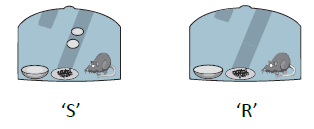
After 2 days he observed that the mouse in container R was dead. The mouse died due to lack of ________.- a)Sufficient sunlight
- b)Sufficient food
- c)Sufficient water
- d)Sufficient air
Correct answer is option 'D'. Can you explain this answer?
Rohit placed a mouse in each of the containers, S, and R as shown. He kept water and food in both the containers. The only difference was that container S had holes on its lid whereas container R did not have a lid with holes. With holes on the lid Without holes on the lid

After 2 days he observed that the mouse in container R was dead. The mouse died due to lack of ________.

After 2 days he observed that the mouse in container R was dead. The mouse died due to lack of ________.
a)
Sufficient sunlight
b)
Sufficient food
c)
Sufficient water
d)
Sufficient air
|
|
Swati Sharma answered |
Air is essential for living beings to survive.
Which of the following comes from a living thing?
- a)

- b)

- c)

- d)

Correct answer is option 'D'. Can you explain this answer?
Which of the following comes from a living thing?
a)

b)

c)

d)

|
|
Edgy Education answered |
Wood comes from the trees, which are living things.
Which of the following is correct about living things?
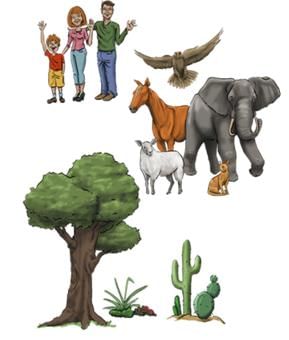
- a)Living things need food to grow.
- b)Living things remain same in size.
- c)Living things cannot eat.
- d)All of these
Correct answer is option 'A'. Can you explain this answer?
Which of the following is correct about living things?


a)
Living things need food to grow.
b)
Living things remain same in size.
c)
Living things cannot eat.
d)
All of these
|
|
Swati Sharma answered |
Living things need food to grow. All options are incorrect about living things.
Which of the following pictures shows living and non-living things together?- a)
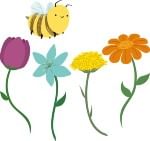
- b)

- c)
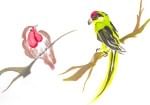
- d)
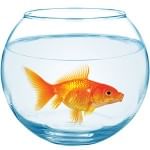
Correct answer is option 'D'. Can you explain this answer?
Which of the following pictures shows living and non-living things together?
a)

b)

c)

d)

|
|
Pranav Singh answered |
Fish is a living thing while water is a non-living thing.
All living things need ___________ to live.
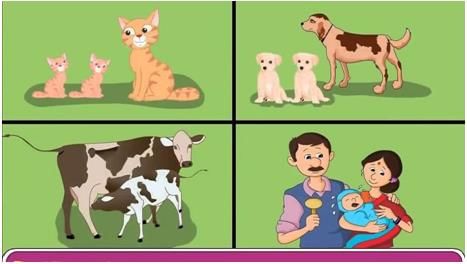
- a)Air, water and light
- b)Air, water and food
- c)Air, water and books
- d)Air, water and soil
Correct answer is option 'B'. Can you explain this answer?
All living things need ___________ to live.


a)
Air, water and light
b)
Air, water and food
c)
Air, water and books
d)
Air, water and soil
|
|
Edgy Education answered |
All living things need air, water and food to live.
A rabbit was kept in a closed box with food and water, yet it died. Which of the following could be a reason for this?
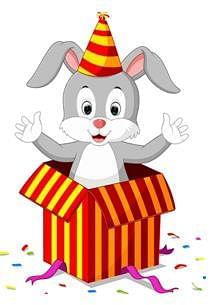
- a)The rabbit did not get sunlight.
- b)The rabbit did not get air.
- c)The rabbit did not get enough space.
- d)All of these.
Correct answer is option 'B'. Can you explain this answer?
A rabbit was kept in a closed box with food and water, yet it died. Which of the following could be a reason for this?


a)
The rabbit did not get sunlight.
b)
The rabbit did not get air.
c)
The rabbit did not get enough space.
d)
All of these.
|
|
Neha Verma answered |
Air is essential for a living being to survive.
Study the given picture. What does it show?
- a)Living things can grow, move, need food
- b)Living things can move.
- c)Living things need food.
- d)None of these
Correct answer is option 'A'. Can you explain this answer?
Study the given picture. What does it show?

a)
Living things can grow, move, need food
b)
Living things can move.
c)
Living things need food.
d)
None of these

|
Kds Coaching answered |
Living things exhibit several key characteristics:
- Growth: All living organisms can grow in size and develop over time.
- Movement: Living beings can move, either by themselves or through external forces.
- Nutrition: They require food to obtain energy and sustain life.
Therefore, the correct understanding is that all these qualities are essential traits of living things.
Pick the odd one out.- a)

- b)
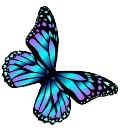
- c)

- d)
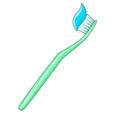
Correct answer is option 'D'. Can you explain this answer?
Pick the odd one out.
a)

b)

c)

d)

|
|
Neha Verma answered |
Toothbrush is a non-living things while other three are living things.
Plant are living, but they cannot_________ like animals.
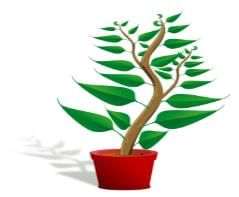
- a)Breathe
- b)Reproduce
- c)Grow
- d)Change position
Correct answer is option 'D'. Can you explain this answer?
Plant are living, but they cannot_________ like animals.


a)
Breathe
b)
Reproduce
c)
Grow
d)
Change position
|
|
tanay tiwari answered |
Because plant canot strech their stem . if we strech plant stem it will broke and some have tender stem also . that's like plant can't strech their stem
Living things reproduce so that__________ .
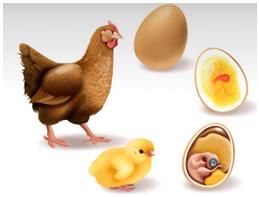
- a)They cannot be eaten up by animals.
- b)There will always be living things of their own kind.
- c)They will not have to fight for shelter.
- d)They will not have to fight for food.
Correct answer is option 'B'. Can you explain this answer?
Living things reproduce so that__________ .


a)
They cannot be eaten up by animals.
b)
There will always be living things of their own kind.
c)
They will not have to fight for shelter.
d)
They will not have to fight for food.

|
Krishna Dash answered |
There will always be living things of their own kind
Which one of these is an incorrect match?- a)

- b)
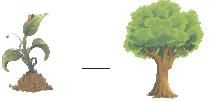
- c)
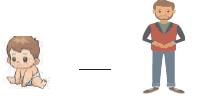
- d)

Correct answer is option 'D'. Can you explain this answer?
Which one of these is an incorrect match?
a)

b)

c)

d)

|
|
Swati Sharma answered |
A toy car is a non-living thing and cannot grow into a big car.
Which characteristic of living things is shown in the given pictures?
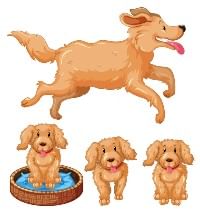
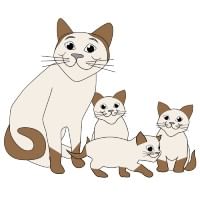
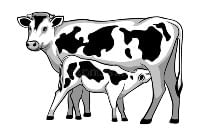
- a)Living things respire.
- b)Living things reproduce.
- c)Living things eat.
- d)Living things can move.
Correct answer is option 'B'. Can you explain this answer?
Which characteristic of living things is shown in the given pictures?





a)
Living things respire.
b)
Living things reproduce.
c)
Living things eat.
d)
Living things can move.
|
|
Rahul Desai answered |
Given pictures show that living things reproduce.
Why is soil important for plants?- a)It gives them food and water
- b)It helps them fly
- c)It gives them light
- d)It gives them toys
Correct answer is option 'A'. Can you explain this answer?
Why is soil important for plants?
a)
It gives them food and water
b)
It helps them fly
c)
It gives them light
d)
It gives them toys
|
|
Akash Tiwari answered |
Soil gives plants the food and water they need to grow.
All ______ things can _____ .
Select the option that correctly fills the blanks in the above sentence.
- a)non-Living breathe
- b)Man-made, grow
- c)Living, walk
- d)Non-living, not breathe
Correct answer is option 'D'. Can you explain this answer?
All ______ things can _____ .
Select the option that correctly fills the blanks in the above sentence.
Select the option that correctly fills the blanks in the above sentence.
a)
non-Living breathe
b)
Man-made, grow
c)
Living, walk
d)
Non-living, not breathe
|
|
Muskaan reddy answered |
Understanding the Correct Answer
The sentence "All ______ things can _____." requires us to fill in the blanks with appropriate terms. The correct option is "D) Non-living, not breathe." Let’s explore why this choice fits best.
Definition of Non-living Things
- Non-living things are objects that do not possess life.
- They do not have biological processes such as growth, reproduction, or respiration.
Characteristics of Non-living Things
- No Breathing: Non-living things cannot breathe. For example, a rock, a chair, or a car does not perform any respiratory functions.
- No Growth: They do not grow or change in a biological sense. A table remains the same size unless physically altered.
Comparison with Other Options
- Option A: "Non-Living breathe" is incorrect because non-living things do not have the capability to breathe.
- Option B: "Man-made, grow" is misleading as man-made items (like toys or furniture) cannot grow like living organisms.
- Option C: "Living, walk" is partially true, but not all living things can walk. For instance, plants and many microorganisms do not walk.
Conclusion
The option "D) Non-living, not breathe" accurately describes the nature of non-living things. They are defined by their lack of life and biological functions, making this the right fit for the sentence. Understanding these characteristics helps clarify the concepts of living and non-living entities.
The sentence "All ______ things can _____." requires us to fill in the blanks with appropriate terms. The correct option is "D) Non-living, not breathe." Let’s explore why this choice fits best.
Definition of Non-living Things
- Non-living things are objects that do not possess life.
- They do not have biological processes such as growth, reproduction, or respiration.
Characteristics of Non-living Things
- No Breathing: Non-living things cannot breathe. For example, a rock, a chair, or a car does not perform any respiratory functions.
- No Growth: They do not grow or change in a biological sense. A table remains the same size unless physically altered.
Comparison with Other Options
- Option A: "Non-Living breathe" is incorrect because non-living things do not have the capability to breathe.
- Option B: "Man-made, grow" is misleading as man-made items (like toys or furniture) cannot grow like living organisms.
- Option C: "Living, walk" is partially true, but not all living things can walk. For instance, plants and many microorganisms do not walk.
Conclusion
The option "D) Non-living, not breathe" accurately describes the nature of non-living things. They are defined by their lack of life and biological functions, making this the right fit for the sentence. Understanding these characteristics helps clarify the concepts of living and non-living entities.
Manya notices that a plant captures insects by shutting its two leaves like a shell, when an insect lands on them. This shows us that living things ____.
1. Can grow
2. Can reproduce
3. Respond to touch
4. Can move by themselves- a)1 and 2 only
- b)2 and 4 only
- c)3 and 4 only
- d)1, 2, 3 and 4
Correct answer is option 'C'. Can you explain this answer?
Manya notices that a plant captures insects by shutting its two leaves like a shell, when an insect lands on them. This shows us that living things ____.
1. Can grow
2. Can reproduce
3. Respond to touch
4. Can move by themselves
1. Can grow
2. Can reproduce
3. Respond to touch
4. Can move by themselves
a)
1 and 2 only
b)
2 and 4 only
c)
3 and 4 only
d)
1, 2, 3 and 4
|
|
Rahul Desai answered |
Living things respond to touch and can move as they react to touch.
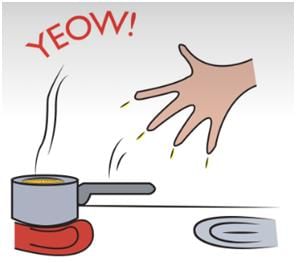

Choose living thing from the pictures shown below:- a)

- b)

- c)

- d)

Correct answer is option 'B'. Can you explain this answer?
Choose living thing from the pictures shown below:
a)

b)

c)

d)

|
|
Freak Artworks answered |
butterfly is a living thing.
Which of the following statements suggest that a battery-operated car is not a living thing?
 1. It takes up space.
1. It takes up space.
2. It is hard and shiny.
3. It does not reproduce.
4. It does not breathe.- a)1 and 2 only
- b)1 and 3 only
- c)2 and 4 only
- d)3 and 4 only
Correct answer is option 'D'. Can you explain this answer?
Which of the following statements suggest that a battery-operated car is not a living thing?


1. It takes up space.
2. It is hard and shiny.
3. It does not reproduce.
4. It does not breathe.
2. It is hard and shiny.
3. It does not reproduce.
4. It does not breathe.
a)
1 and 2 only
b)
1 and 3 only
c)
2 and 4 only
d)
3 and 4 only
|
|
Edgy Education answered |
A battery operated car is a non-living thing that cannot breathe and reproduce.
Select the statement which shows that living things need non-living things to stay alive.
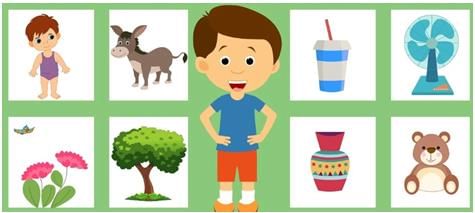
- a)Living things breathe air.
- b)Living things drink water.
- c)Living things can reproduce.
- d)Both (a) and (b).
Correct answer is option 'D'. Can you explain this answer?
Select the statement which shows that living things need non-living things to stay alive.


a)
Living things breathe air.
b)
Living things drink water.
c)
Living things can reproduce.
d)
Both (a) and (b).

|
Kds Coaching answered |
Living things require air (oxygen) for respiration and water for hydration, both of which are non-living things. Option (c), "Living things can reproduce," describes a characteristic of living things but doesn't directly relate to their dependence on non-living things for survival.
Chapter doubts & questions for Local Habitats - Science for Grade 2 2025 is part of Grade 2 exam preparation. The chapters have been prepared according to the Grade 2 exam syllabus. The Chapter doubts & questions, notes, tests & MCQs are made for Grade 2 2025 Exam. Find important definitions, questions, notes, meanings, examples, exercises, MCQs and online tests here.
Chapter doubts & questions of Local Habitats - Science for Grade 2 in English & Hindi are available as part of Grade 2 exam.
Download more important topics, notes, lectures and mock test series for Grade 2 Exam by signing up for free.
Science for Grade 2
28 videos|93 docs|53 tests
|

Contact Support
Our team is online on weekdays between 10 AM - 7 PM
Typical reply within 3 hours
|
Free Exam Preparation
at your Fingertips!
Access Free Study Material - Test Series, Structured Courses, Free Videos & Study Notes and Prepare for Your Exam With Ease

 Join the 10M+ students on EduRev
Join the 10M+ students on EduRev
|

|
Create your account for free
OR
Forgot Password
OR
Signup to see your scores
go up within 7 days!
Access 1000+ FREE Docs, Videos and Tests
Takes less than 10 seconds to signup



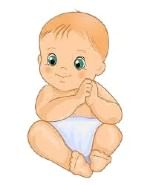

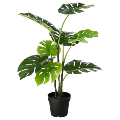






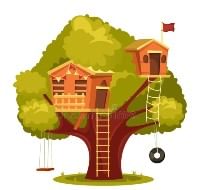

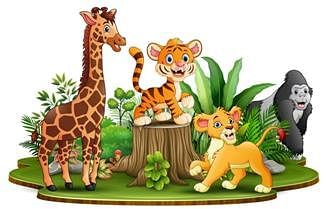


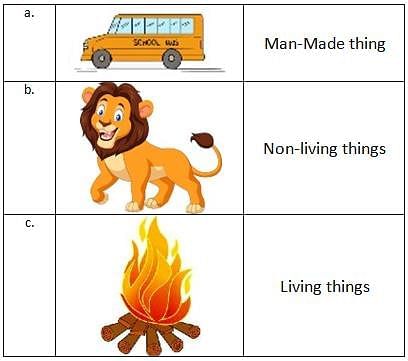


















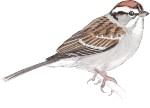

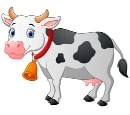
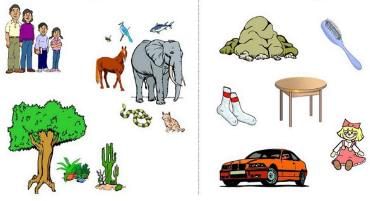






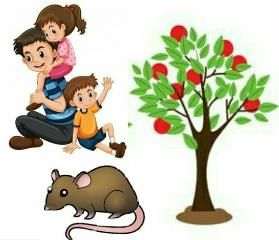
 is a living thing because ______ .
is a living thing because ______ .











